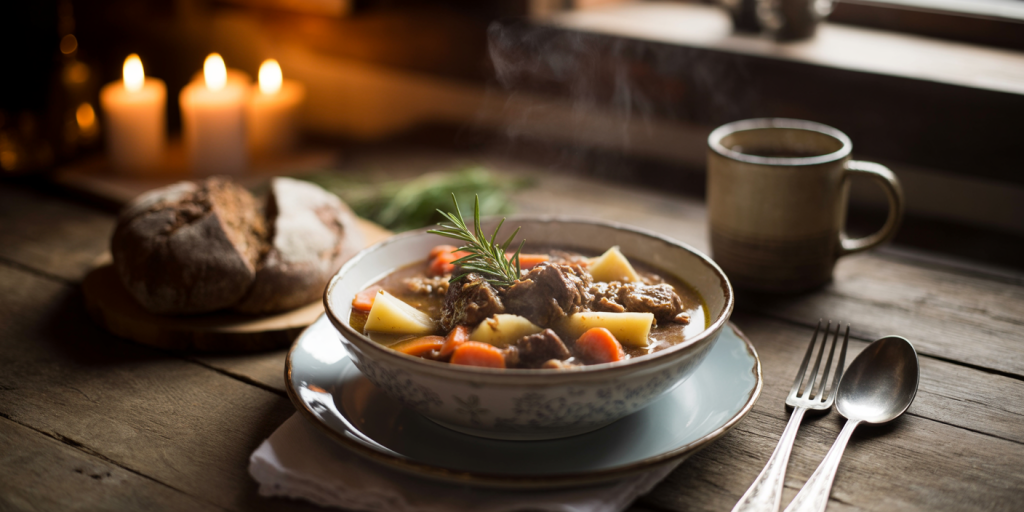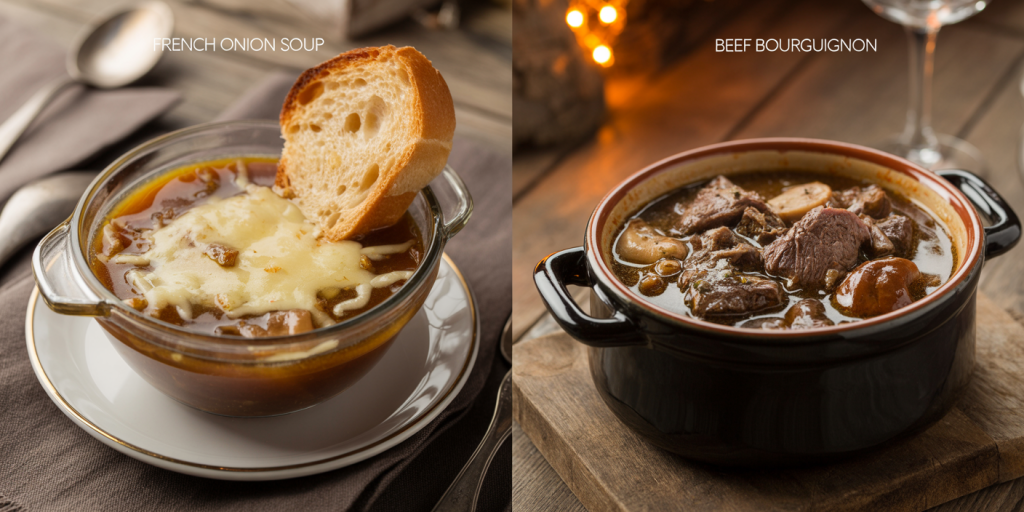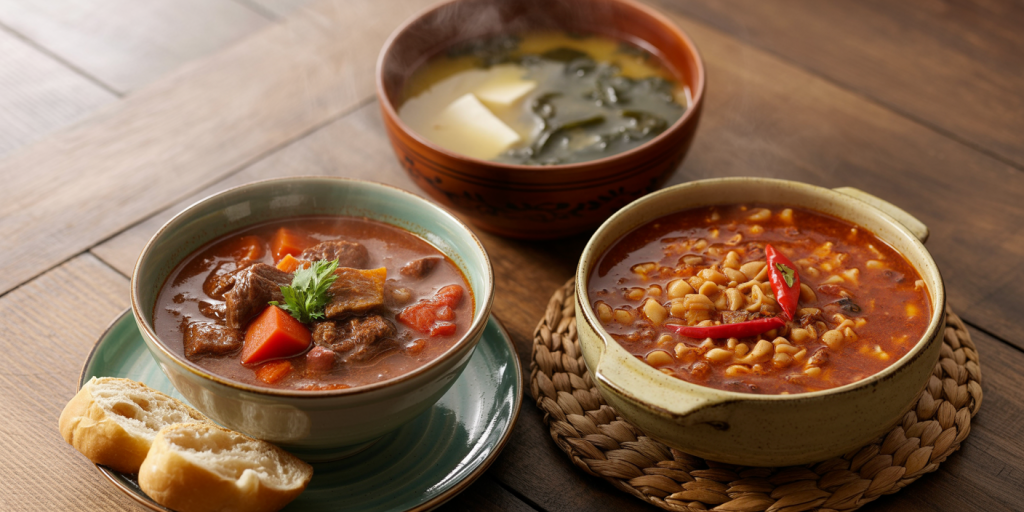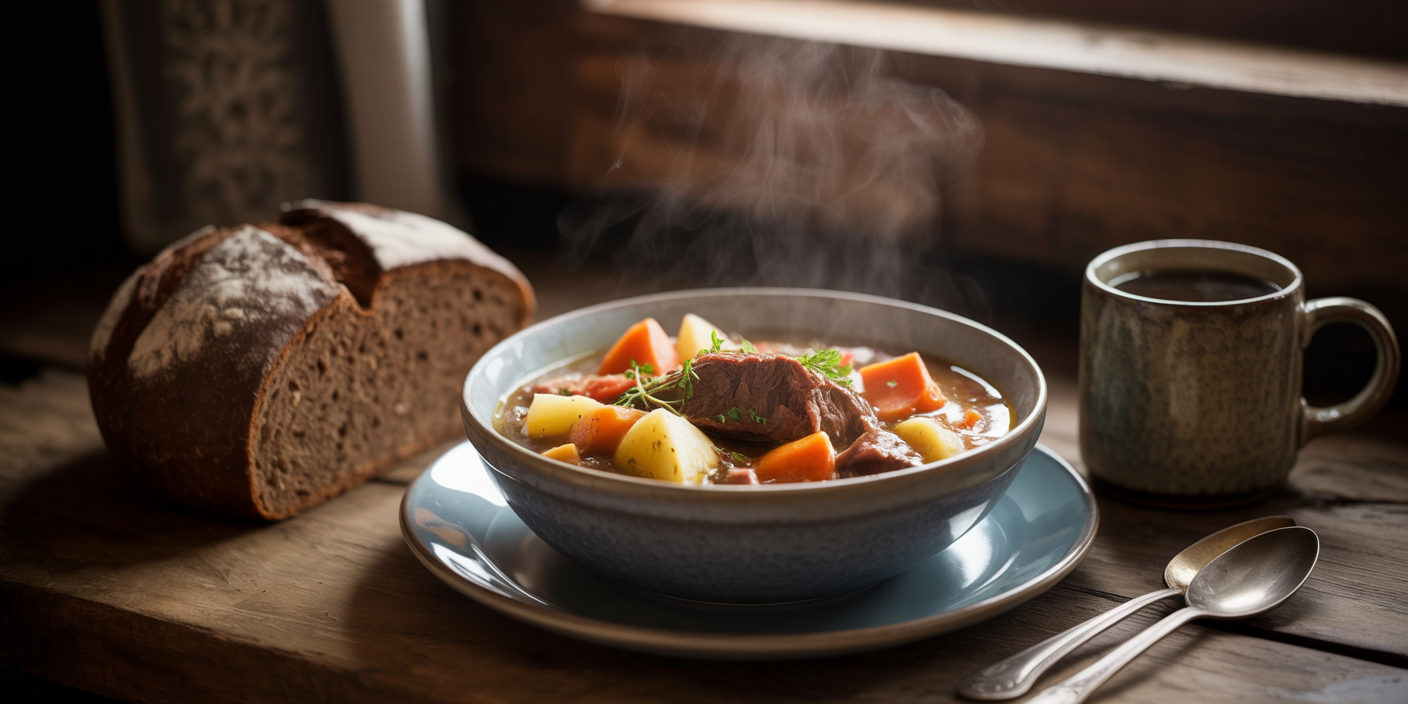As the temperature drops and the nights grow longer, the desire for warm, comforting meals naturally rises. Soups and stews have long been favored as quintessential comfort foods, perfect for cozy nights at home. Their ability to combine nutrition, flavor, and warmth makes them a staple in households worldwide during cooler seasons. Whether it’s the earthy aroma of a slow-simmered beef stew or the vibrant zest of a tomato basil soup, these dishes offer not only sustenance but also emotional comfort, bringing a sense of home and tradition to the table.
Over the years, both soups and stews have evolved through family recipes, cultural exchanges, and modern culinary innovations. According to a 2023 survey from the National Restaurant Association, 62% of consumers increase their soup and stew consumption in fall and winter, citing health benefits and comfort as primary reasons. This article explores the art of selecting, preparing, and enjoying soups and stews for those chilly evenings, detailing ingredient choices, cooking techniques, health benefits, and future trends that shape how we approach these timeless dishes.
Understanding the Basics: Soup vs. Stew
The terms “soup” and “stew” are often used interchangeably, but they represent different culinary methods and textures. Generally, soup tends to have a thinner, broth-based consistency, often served as a starter or a lighter meal. Stews, by contrast, are heartier, thicker, and usually involve larger chunks of vegetables or meat simmered for extended periods.
For example, classic French onion soup is typically a clear broth enriched with caramelized onions and topped with toasted bread and cheese; it serves as a light yet flavorful beginning to a meal. Meanwhile, a beef bourguignon stew involves slow-cooked beef, mushrooms, and wine, resulting in a rich and dense dish perfect for a main course. Understanding these differences guides cooks in selecting the right recipes for their needs, whether seeking a light warming option or a filling, substantial plate.

A comparative overview is presented below:
| Attribute | Soup | Stew |
|---|---|---|
| Consistency | Thin or medium broth | Thick, chunky and hearty |
| Cooking Time | Short-to-medium (30 min – 1 hr) | Long (1-3 hours) |
| Typical Ingredients | Vegetables, broth, grains | Meat, root vegetables, thickening agents |
| Serving Occasion | Starter or light meal | Main meal |
| Nutritional Density | Moderate | High |
This table sheds light on how each dish fits into the culinary spectrum and dining preferences, helping home cooks make intentional choices for their cozy nights.
Nutritional and Health Benefits
Soups and stews are more than just a comfort food; they can be nutritional powerhouses. Incorporating a wide range of vegetables, legumes, and lean meats, these dishes offer an easy and enjoyable way to meet daily dietary requirements. Studies demonstrate that people consuming more soup tend to increase their vegetable intake by up to 40%, which is crucial for overall health and immunity, especially in cold seasons.
Bone broth-based soups, for instance, are rich in collagen, minerals, and amino acids that support joint health and gut lining. In addition, lentil or bean-based stews provide a high amount of plant protein, fiber, and essential vitamins such as folate and iron. According to data published in the Journal of Nutrition, a single serving of lentil stew can meet nearly 50% of the daily recommended fiber intake, which promotes digestive health.
Equally, low-calorie soups can aid in weight management by creating a sense of fullness without excess energy intake. A practical example includes vegetable minestrone soup, which is packed with tomatoes, beans, and leafy greens, offering fiber and antioxidants with fewer than 150 calories per serving.
Iconic Soups and Stews Around the World
The global variety of soups and stews reflects cultural identities, geographical influences, and time-honored traditions. For cozy nights, exploring international recipes can bring exciting flavors and new comfort experiences to the table.
Take, for example, the classic Hungarian goulash stew. Known for its generous portions of paprika-spiced beef and onions, this dish is slow-simmered to tender perfection, both flavorful and warming. Similarly, Japan’s miso soup, with its umami-rich broth infused with fermented soybean paste and seaweed, offers a quick, soothing option that supports digestive health.
In Latin America, pozole—a stew made with hominy corn, pork, and chili pepper—is enjoyed during gatherings and cold evenings. It exemplifies how soups and stews function beyond nourishment, facilitating social bonds and cultural connection. Introducing such recipes into your weeknight routine can elevate both the taste and the emotional warmth of a meal.

Practical Tips for Making the Perfect Soup or Stew
Creating an ideal soup or stew for cozy nights involves balancing flavors, textures, and cooking methods. Here are several practical tips employed by professional chefs and experienced home cooks to ensure success:
1. Use Quality Stock or Broth: The base is paramount. Homemade stocks made from simmering bones, vegetables, and herbs for hours provide depth and richness. For convenience, low-sodium store-bought stocks can also be used, but flavor adjustments may be necessary.
2. Layer Flavors: Start with sautéing aromatics like onions, garlic, and celery before adding liquids and other ingredients. Browning meat or roasting vegetables beforehand enhances the overall taste.
3. Simmer Slowly: Slow cooking allows flavors to meld and tenderizes tougher cuts of meat. Using a slow cooker or stovetop method at low heat yields excellent results.
4. Avoid Over-Thickening: While some thickness is desirable in stews, too much thickening can result in a gluey texture. Natural reduction through slow simmering is preferable, or using small amounts of flour or cornstarch added toward the end.
A case study from a Boston culinary school suggests that soups and stews prepared over longer cooking times achieve greater flavor complexity, which enhances satisfaction and perceived comfort.
Pairings and Serving Suggestions
Soups and stews are versatile and can be paired with various sides and beverages to enrich the cozy experience. Nutritional balance can be improved with whole-grain breads, simple salads, or light pickles that add textural contrast.
For example, a creamy butternut squash soup pairs beautifully with crusty sourdough bread brushed with olive oil, offering a crunchy complement to the smooth texture. Hearty stews like Irish lamb stew are traditionally served with boiled potatoes or buttered cabbage, combining textures and tastes for a complete meal.
Beverage pairings depend on flavor profiles; lighter vegetable soups go well with herbal teas or crisp white wines, while robust meat stews harmonize with bold red wines or dark ales. These combinations not only enhance flavors but also add warmth and satisfaction during chilly evenings.
Future Perspectives: Innovation and Trends in Soups & Stews
The popularity of soups and stews is expected to continue growing, influenced by changing lifestyles, health consciousness, and culinary innovation. Plant-based and allergen-friendly versions, fueled by rising veganism and dietary restrictions, are becoming mainstream. Brands and restaurants increasingly feature gluten-free, low-sodium, and organic options.
Technology is transforming preparation as well. Instant pots and multi-cooks enable quick recipes that preserve the slow-cooked flavor, catering to busy consumers seeking convenience without sacrificing quality. Additionally, nutritive enhancement through superfoods such as turmeric, kale, and quinoa is reshaping traditional recipes, aligning them with modern wellness trends.
The demand for frozen and ready-to-eat soups and stews is projected to grow at a compound annual rate of 4.2% through 2028, according to a recent market report by Allied Market Research. This rise is attributed to consumers’ preference for healthy comfort foods that require minimal preparation.
Moreover, culinary tourism and cultural fusion will likely inspire new creations, merging global influences into warming comforts that fit contemporary palates. This evolution keeps soups and stews relevant as both nostalgic and forward-looking dishes, perfect for cozy nights today and beyond.
—
In summary, soups and stews are quintessential dishes for cold weather, combining simplicity, nutrition, and comfort. From understanding foundational differences to exploring global recipes, incorporating professional tips, and anticipating future trends, this comprehensive guide underscores why these dishes remain favorites during cozy nights. By embracing tradition and innovation alike, home cooks and food enthusiasts can continuously enjoy comforting bowls that warm body and soul.


Deixe um comentário